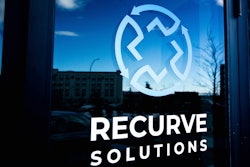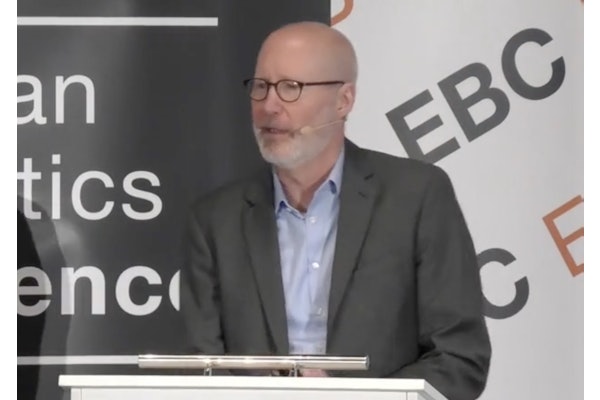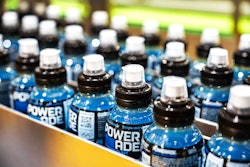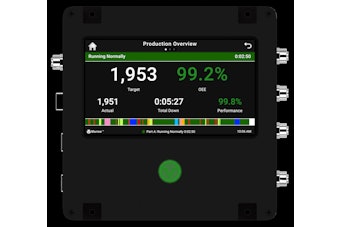Like most large brand owners, General Mills has made a variety of sustainability-minded commitments that it has pledged to meet within a specific timeframe. It has done so both because it’s the right thing to do ethically, and for more practical reasons. After all, ecologically friendly operations translate into a sustainable business model that will remain profitable long into the future.
Climate change in particular threatens the long-term ability for General Mills to do business. That’s why decarbonization is a pillar of the company’s sustainability commitments. It has a 30% absolute goal to reduce its emissions end-to-end, scopes one through three, by 2030 from its baseline. It then aims to be net-zero on emissions across all of its value chain by 2050.
“Since our products are rooted in the Earth, we have a unique bond with Nature. Threats to Nature are threats to our business, threats to our existence as a food company,” Mark McCullough, Global Impact—director, operations integration, General Mills, said in an October F4SS supply chain conference that Packaging World attended. “We are taking the outputs of farming communities across the Earth and transforming those into something that’s delicious and convenient for consumers, then we market it to them. If the front end of the business, the upstream, agricultural part of our sector breaks down and the natural resources that we depend upon decline, we know that our business can be challenged. This is why General Mills, and its peers, are focusing on this.”
There’s also plenty of external pressure from ESG (environmental, social, and governance) sources that are shaping brands’ attitudes toward sustainability. Regional governments are rolling out EPR (extended producer responsibility) laws that will shape brand behavior. On the heels of massive investors like BlackRock saying that sustainability is a major factor in selecting where it will place its bets, investors are increasingly asking for companies’ sustainability bona fides. And we can’t forget consumer behavior; among General Mills companies, products that are marketed as more sustainable are growing at a rate that’s seven times faster than standard products.
“And the last one is retailers, the customers of our business,” McCullough said at the event. “Our retail customers have set lots of goals and they expect the players up the value chain to help them meet those, whether that’s on carbon emissions, regenerative agriculture, or other things. As one example, Walmart has a 50-million-acre regenerative agriculture goal and they’re looking to companies like ours to help them meet it.”
Clearly, it’s in General Mills’ interest to proceed down a sustainable path. But while the company’s brands are the outward-facing products that consumers deem responsible for carbon-heavy value chains, what can the company do to impact sustainability, particularly decarbonization? Where it sits on the value chain, operations within the four walls of the Minneapolis-based company and its many facilities aren’t responsible for much of the carbon footprint that the overall value chain leaves. By its calculus, the company only directly contributes about 8% of greenhouse gasses in its value chain. That leaves more than 90% of the value chain’s emissions that come from scope three, which means emissions that General Mills does not directly have control over.
Most the carbon footprint of the value chain—61% of it in fact—comes from the upstream agribusiness that grows the crops and raises the livestock. And 22% of GHG emissions occur downstream from General Mills plants and facilities, such as in distribution, warehousing, and retail.
Naturally, the company has started with its own 8%, and in parallel has rolled out programs aiming to limit the 61% of value chain emissions upstream in its agricultural sourcing. And the downstream carbon emissions are being addressed in concert with retailers.
Interestingly, that leaves a small but significant sliver, a 9% swath of carbon emissions, in a unique part of the value chain. That’s in contract manufacturing and packaging (CM/CP).
“We are very invested in helping our partners reach their climate goals as well, in order to see the full decrease in our emissions we need to see to achieve our goals,” added Jessica Jubara, senior climate manager, General Mills, at the F4SS conference.
Packaging World caught up with McCullough after the event to see how his company strategically approaches sustainability and data reporting with its CM/CP suppliers.
Packaging World:
Roughly how much does General Mills work with contract packaging and packaging suppliers (CM/CP)?
Mark McCullough:
Roughly 25% of our finished product production comes from co-manufacturers, versus production at owned facilities.
Do you see any coming changes in the number/volume of upstream partners you work with for packaging operations? If a change, why?
As we work to scale our execution of our recyclable packaging commitment, we will continue working with existing suppliers and potentially need to engage new supply partners. In some cases, new technology will be needed and our access to this will be unlocked by working with new suppliers, particularly leveraging partnerships with suppliers further upstream (film producers, etc.)
What do your procurement or sourcing organizations look for in a CM/CP partner?
Our sourcing team seeks holistic value from co-manufacturers which spans cost, quality, service, capacity, innovation, and sustainability performance. Based on our diverse needs across many product platforms and food categories, we work with a broad set of co-manufacturers.
Does the sustainability profile of the CM/CP vendor factor in with the partnerships you choose? Could it be a differentiator?
Sustainability is an area of increasing importance and focus for General Mills. We are looking to our co-manufacturer and co-packager partners to help us deliver our sustainability goals across our people and planet ambitions.
Do you participate in programs that report, track, and over time, limit greenhouse gas emissions? Do you report this information to your retailer customers? How do your own, in-house packaging operations fit in to this reporting?
General Mills tracks and reports its scope one through three emissions in accordance with guidelines of the Greenhouse Gas Protocol. We report our emissions to CDP [formerly known as the Carbon Disclosure Project] and other raters and rankers, as well as directly to various customers through their bespoke reporting activities.
Do you ask your upstream CM/CP suppliers to participate in ESG programs that report, track, and over time, aim to limit greenhouse gas emissions?
Today, General Mills does not require co-manufacturers to participate in programs that report, track, and reduce their emissions over time. However, we support our suppliers in this and look to require these activities in the future.
Do you use platforms that help stakeholders track sustainability and emissions, such as EcoVedis, CDP, S-LoCT, or others?
General Mills reports on various elements of our climate ESG work and performance into CDP. We also sponsor select suppliers in a decarbonization training program called Supplier Leadership on Climate Transition (S-LoCT) that is managed by Guidehouse.
How do you differentiate between self-reported data and third-party audits? Is one more valuable than the other?
We find both methodologies valuable. We have General Mills audits for areas like food safely and regulatory compliance, and we use third-party audits for other elements such as Responsible Sourcing against SMETA [Sedex Members Ethical Trade Audit] protocol. We take into account internal expertise and resourcing in the decision to audit ourselves versus using third-party audits.
That’s a good segue to the next question. We often focus on the environmental (E) side of ESG, but there are also social (S) impact elements that are relevant to human rights abuses, child labor, etc. Do these social elements come into play in your own packaging operations? How do you ensure your CM/CP suppliers meet the standards you hold yourself to?
General Mills has a Supplier Code of Conduct that lays out our expectations and requirements of suppliers on the topics of Human Rights, Health/Safety, Environment, and Business Integrity. The Supplier Code of Conduct applies to all our suppliers and their suppliers. Compliance to the Supplier Code of Conduct is mandatory and monitored via our Global Responsible Sourcing Program.
Do you use audits like SMETA to track your CM/CP partners’ performance in this arena, or any other platforms? Again, who pays for this?
As mentioned earlier, General Mills pays for these audits for our own facilities, and asks suppliers to pay for their own audits. Audit results can be shared with all customers and are good for three years.
What advice would you give to fellow brand owners and CPGs seeking to bring their upstream packaging partners closer in line with their sustainability goals?
Incorporate ESG performance into [your] purchasing decisions and set them as requirements for doing business with the organization.

























